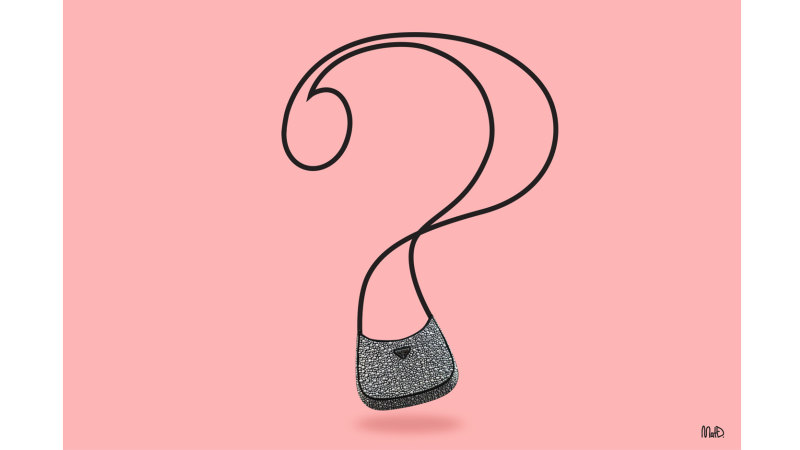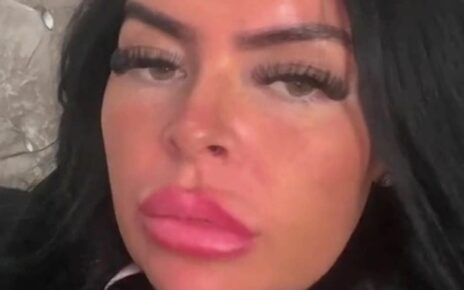Save articles for later
Add articles to your saved list and come back to them any time.
The lump in my throat grew larger as I recalled my friend’s instructions. From the lift, count five shops to the left; if you hit the yum cha restaurant, you’ve gone too far.
It was 2005, and I was standing in a shopping centre in Shenzhen, China, having taken the train from Hong Kong – a journey thousands of Australian tourists make each year. I don’t speak Mandarin, so my Chinese-speaking friend had instructed me, upon entering the store, which was stacked floor to ceiling with Hermes, Chanel and Burberry, to ask for the “export quality” bags and wait.
When you buy a superfake, what are you really financing?Credit: Matt Davidson
In China, to ask for the bags “out the back”, is to be taken on a wild orienteering course through the shopping centre’s stairwells to the roof, down a seemingly dead-end corridor and, after rotating an electric switchboard that is actually a door, into a room that to a “superfake” bag lover can only be described as heaven.
Yes, I once trekked to China to buy superfakes, the high-quality fake handbags that, as I wrote about in this masthead last Sunday, have been allegedly substituted for the real thing by luxury emporium Cosette. (The company, which has stores online and in Sydney’s CBD, has repeatedly denied selling fakes.)
So, why the confession? Well, first to demonstrate that there was a time when I wanted a designer bag so badly – but on my junior salary could ill afford – that I was prepared to buy a high-quality fake for a few hundred dollars instead of the thousands commanded by the genuine article. But, also, to acknowledge that I, too, was once naive enough to think that my purchase of a fake was an innocent, victimless crime. Because at the end of the day, counterfeits in any form are illegal.
When it comes to superfakes, the chain of criminality – and victimhood – is multilayered.
There are the people who work, often in slave-like conditions, to make the bags; the gangs that peddle them, using the profits to fund drug syndicates and organised crime; the luxury brands, whose trademarks and bottom lines are eroded (although, some maintain the brands turn a blind eye to counterfeits as a form of free marketing, by having their brand on the street, on the shoulders of people who could never afford to buy the real thing anyway); and the end consumers, who, if they’re in on it, are wilfully exposing themselves to dangerous chemicals such as lead from the inferior components, and if they’re not, have likely been scammed.
Which brings us to our investigation into Cosette and the many people who are claiming their designer purchases, which ranged from $1500 to $3000, are likely fake. There’s the woman we met outside the Cosette store in Sydney on Thursday whose husband died recently – the Prada bag, which was declared fake earlier this week by an independent authenticator, a gift to cheer up her daughter.
Or the Melbourne woman whose husband wanted to buy her a 25th anniversary present and, trying to save a few dollars, directed him to Cosette over the bag brand’s own boutique. Both women received refunds after taking their claims to Cosette, but both have suffered embarrassment, shame and stress over the ordeal. (Cosette denies the refunds were an admission of liability and says they were given in the interests of “customer satisfaction”.)
This week alone, NSW Fair Trading has received at least 125 complaints regarding Cosette. To put this into perspective, Samsung Electronics received 78 complaints last month – the highest for all of June. Cosette will appear on the next edition of Fair Trading’s Complaints Register, and an investigation is under way. I dare say that complaints tally would have increased by the time you’ve finished reading this.
Given this is clearly a serious consumer issue, it amazes me that so much of the commentary surrounding this story has reverted to sexist tropes about women “getting what they deserve” by daring to covet a luxury handbag, especially during a cost-of-living crisis. Insensitive. Read the room. No sympathy.
Turning the issue of counterfeit bags – indeed any counterfeit item, from car parts to clothing – into a “women’s problem” is to miss the point. What matters much more is that highly sophisticated criminal gangs aren’t just plying their trade in the underworld realms of drugs or weapons, but in places frequented by stay-at-home mothers and people who, in a world filled with so much negativity and disappointment, just want to treat themselves a little.
High-quality superfake designer bags are on the rise.
When planeloads of families heading on holidays to Bali are delayed by days due to airline incompetence, we don’t dismiss them as “silly women” (because women are overwhelmingly the ones who organise family travel) who should be staying at home rending their garments about the state of the world. Nor do we begrudge every second person on the street with a decent watch or late-model iPhone for their “irresponsible” purchase. Like watches, or art, designer bags, when real, are legitimate investments that increase in value over time. But, when fake, are as much a scandal as any art forgery.
Once we can appreciate the criminality of fakes, it becomes clearer why we should all be concerned. How did they get here? How were they sold unchecked for so long? And how can the authorities act to ensure the same perpetrators don’t just reappear under a new name? These are all the questions we should be asking, instead of goading the victims.
I know I have learnt my lesson since my trip to Shenzhen. If I can afford the bag direct from the designer, then great. And if not, I’d much rather carry a bag made by a boutique Australian or New Zealand brand, which I can wear with pride, and never the cloak of shame that comes from carrying a copy, however “super” it may be.
Make the most of your health, relationships, fitness and nutrition with our Live Well newsletter. Get it in your inbox every Monday.
Most Viewed in Lifestyle
From our partners
Source: Read Full Article




